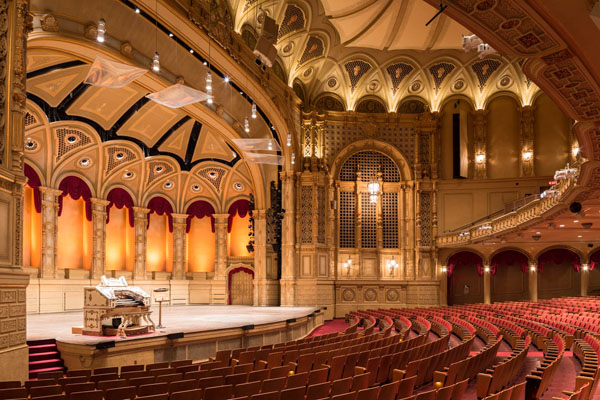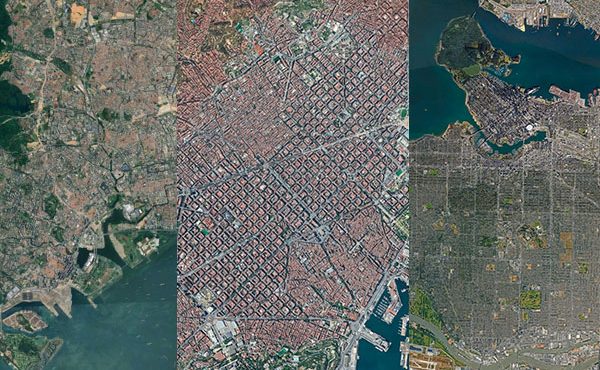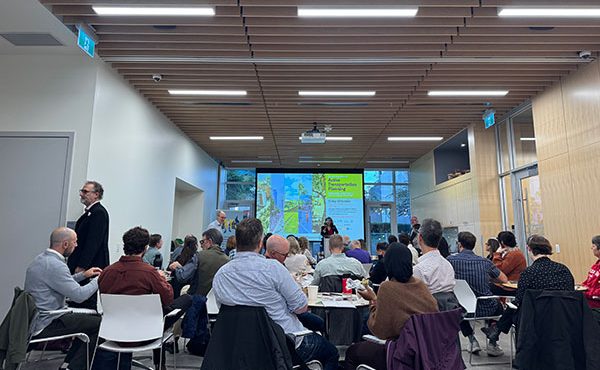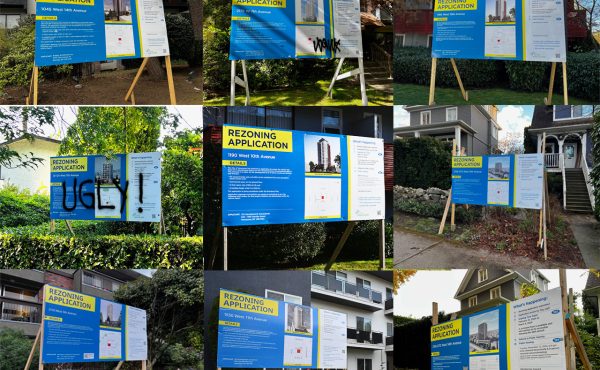
Authors: Berçin Janzen, George Poulos and Erick Villagomez
Urban life depends of a myriad of interconnected and complex systems. Only rarely do citizens of any city pause to reflect on the hidden network people, places and things that structure their daily lives. We wake up, turn on the taps, switch on the lights, perhaps have a quick breakfast before heading to the local community centre for an early morning swim, obediently following a handful of traffic lights on the way – without knowing the huge efforts involved in making this simple routine possible.
On Saturday, October 4th, however, Vancouverites were given the unique opportunity to get a glimpse of some of these special places that govern our urban lives via the inaugural Doors Open Vancouver initiative. Created by the City of Vancouver in partnership with the Urbanarium, Vancouver Public Space Network, the Vancouver Heritage Foundation, Tourism Vancouver and Cascadia Green Building Council, the one-day event invited the public to partake in behind-the-scenes tours of 20 locally significant buildings across the city.
Covering a wide spectrum of interests, the tours allowed the public to peer into an amazing range of often typically unseen spaces and places, and get a little better understanding of the complexity behind the everyday workings of our city. From Carnegie Community Centre and Vancouver City Hall, to the Vancouver Police Department Tactical Training Centre, The Orpheum Theatre, and Vancouver Animal Control Centre, the well-chosen diversity of locations did not leave many gaps in terms of interesting subjects to learn about.
Fortunately, a small handful of Spacing Vancouver writers had the opportunity to visit some of the locations. And although we did not get a chance to visit all the sites, the following will give you a taste of some of the interesting places we experienced:
The False Creek Pump Station, located in Yaletown’s David Lam Park, is the home to the nerve centre of one of Vancouver’s underground marvels – the Designated Fire Protection System (DFPS). Completed in 2003, the DFPS was constructed as an enhanced secondary fire suppression system for the Downtown core, Kitsilano, and Fairview Slopes neighborhoods. The thinking behind the DFPS is simple; under the stress of a large earthquake or given a high-rise fire, the regular water supply network may not be up to the task. The DFPS itself is comprised of a 10 kilometer network of 24-inch welded steel pipes, and is studded by 70 special high capacity fire hydrants which can be easily spotted by their characteristics blue and white colour schemes. When hooked up to five inch hoses, water can be delivered to a fire at a distance of up to 825 metres.
The muscle behind this massive water delivery system is derived from twin pumping stations, located at False Creek and Coal Harbor. Each station is equipped with two large turbine pumps and are driven by two massive Caterpillar diesel engines. Each pump draws water from massive 675,000 litre storage tanks, which are located deep underneath each pumping station. At full blow, each station can pump 45,000 litres of water per minute through the DFPS network. However, each station is also fully equipped to draw in sea water from the Burrard inlet and False Creek in the event that the storage tanks become depleted, or the regular municipally water supply becomes cut off. The False Creek Pump Station serves as the main operations and control hub for the entire DFPS. In addition to the aforementioned equipment, the False Creek Pump Station is also fitted out with an intricate array of communications equipment, which allows operators to monitor technical indicators, coordinate emergency responses, and essentially control every facet of the DFPS.
Vancouver Fire and Rescue Training Centre
Located along the north-east side of the False Creek Flats – just south of Strathcona Park – the Vancouver Fire and Rescue Training Centre is a relatively unassuming facility. Although is it clearly more modern that the many “Grocery Row” warehouses along Malkin Avenue, it’s easily passed by the casual walker or driver. Yet, it’s the home to a number of amazingly cool things that were shared with lucky visitors.
Starting with an informative introductory presentation that outlined the many faces of the Fire Department and what they do, the tour took tour-goers across the complex. From inside the City’s only burn-building — an amazing soot covered building equipped with controlled fires for training exercises – and pristine equipment storage area of the HUSAR (Heavy Urban Search and Rescue) team, to the dog training playground, and car crash rescue area, visitors received great insights as to the diverse workings of the complex. Tour-goers were even given the opportunity to work fire hoses(!!!). Judging from the excitement and awe-filled expressions of the parents and children alike, the hour-long tour was perfectly suited to carry out the classic dream of becoming a firefighter.
Renowned for its having the first buildings in Canada to receive LEED Gold Certification, the Vancouver’s 12-acre National Works Yard includes a wide range of facilities such as parking operations, fueling station, and various warehouses. As one of the main infrastructural hubs in the city, the complex is open 365 days a year, 24 hrs a day. As such, the tour was a brief half hour and visitors had to enjoy the workings of the extensive grounds from afar, being largely confined to the award-winning main administrative building that fronts onto National Avenue.
Despite this limitation, the guides did well at explaining the many sustainable technologies and design features of the building and site. Furthermore, tour-goers were allowed to peek into several of the interesting rooms on the main level. Some highlights included the light maintenance room (where many were blown away by the large scale of the traffic lights and light standards often seen from the ground) as well as the sign shop, that was filled with many of the signs seen across Vancouver. The tour ended with the opportunity to get up close and personal with a small handful of the City of Vancouver machinery and trucks.
Vancouver Animal Control Shelter was a vast contrast to the grand Orpheum Theatre. The tour around the humble facility took no more than fifteen minutes. Understandably, the Vancouver Animal Control Shelter is a space that caters to the basic needs of animals, as opposed to the entertainment of humans and as a result it is a practical space that considers needs over aesthetics. All the equipment was where it needed to be and they were easily accessible to employees and volunteers.
Although many associate the Animal Control Centre with dogs and cats, the reality is that they carry quite a bit more diversity – from turtles and birds to hamsters and rabbits. An unplanned highlight of the tour, in fact, was a couple of folks who were there adopting Corn snakes were kindly allowing tour goers to hold their beautiful pets. The children present were having a field day.
***
Berçin Janzen is second year Interior Design student at Kwantlen Polytechnic University. Berçin’s roots may lay in the city of Istanbul but she has called Vancouver home for the past twenty-two years. She has a passion for the environment, wildlife conservation, supporting local businesses, and the never ending possibilities of design. She is a student of life and adventure.
George Poulos, EIT, MSCP. George is a transportation engineer-in-training as well as a recent Masters graduate of the School of Regional and Community Planning (SCARP) at UBC. He has previously worked for consulting engineers on a variety of transportation and municipal projects. Originally from Ontario, he currently lives in Vancouver.
Erick Villagomez is one of the founding editors at Spacing Vancouver. He is also an educator, independent researcher and designer with personal and professional interests in the urban landscapes. His private practice – Metis Design|Build – is an innovative practice dedicated to a collaborative and ecologically responsible approach to the design and construction of places. You can see more of his artwork on his Visual Thoughts Tumblr.




